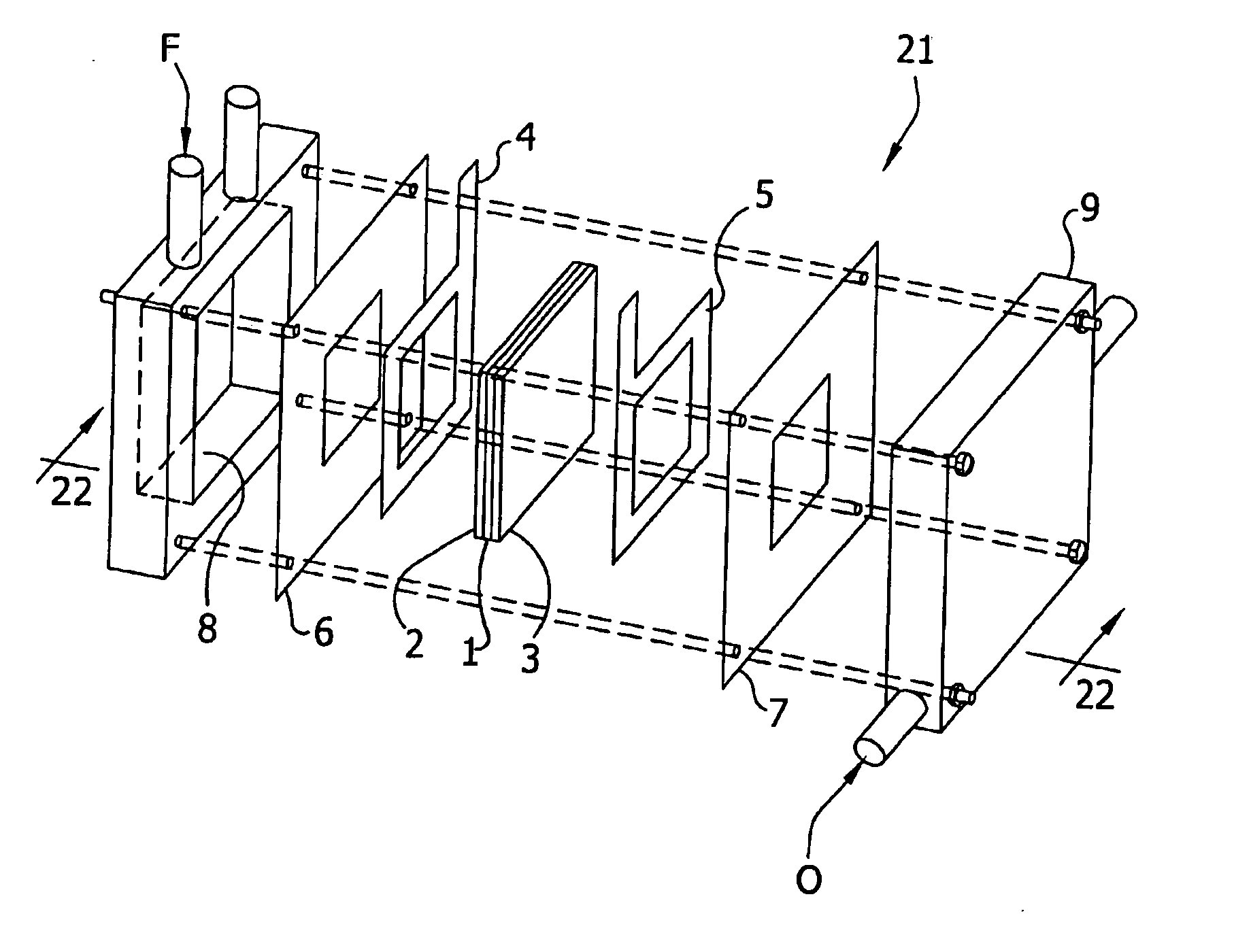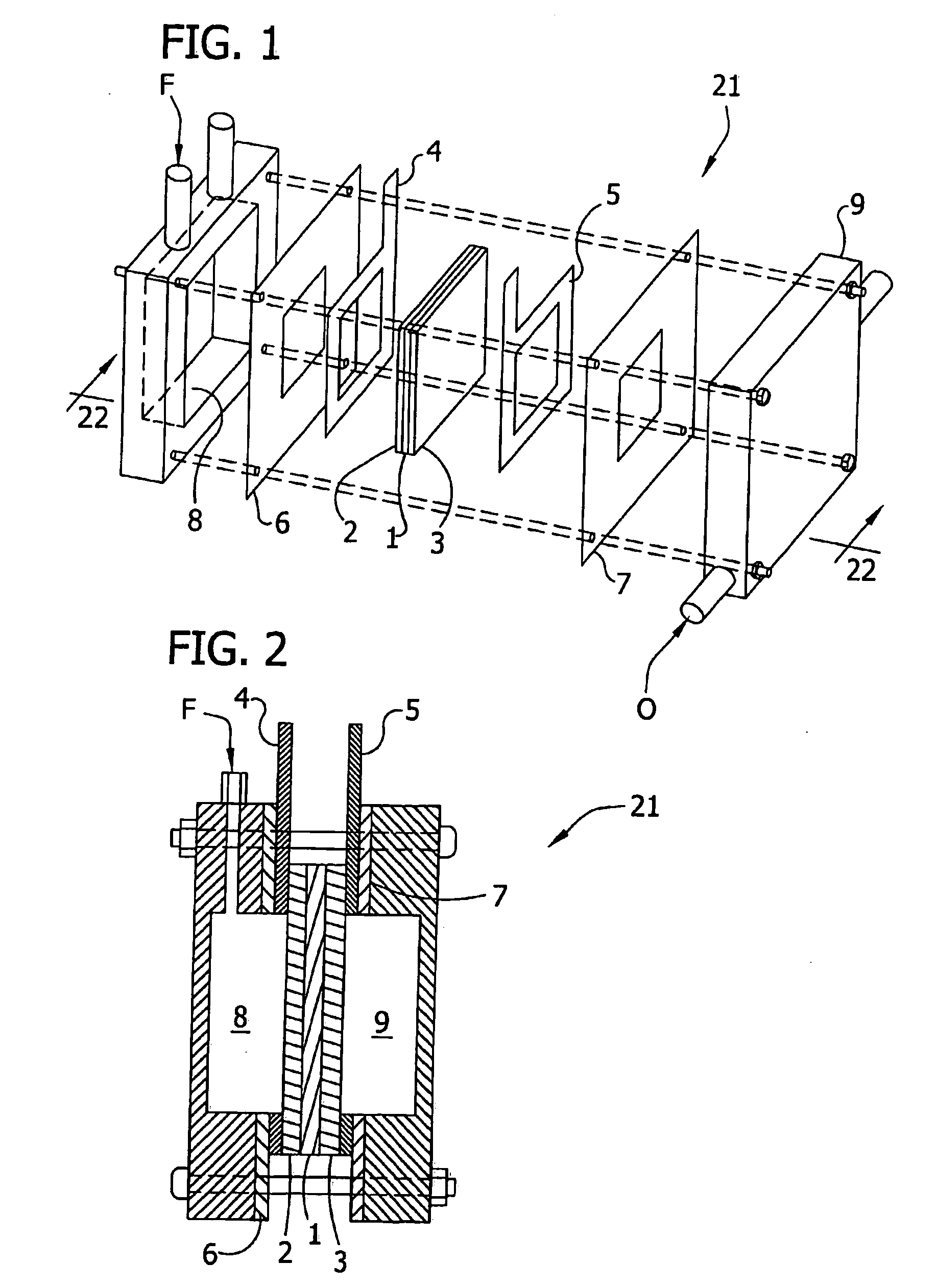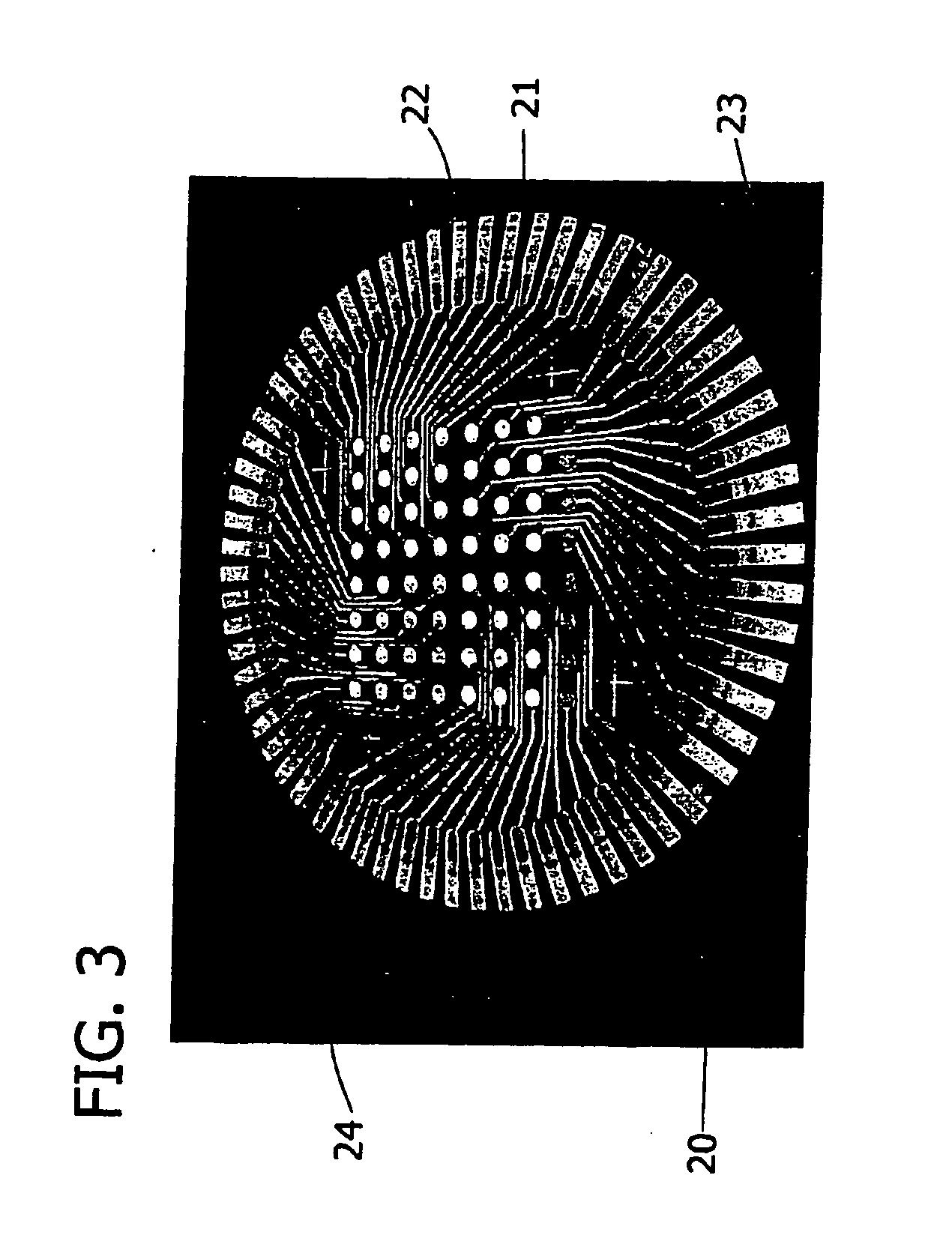Fuel cell electrocatalyst of pt-mn-co
a fuel cell and electrocatalyst technology, applied in the field of metal catalysts, can solve the problems of increasing the cost of fuel cell electrocatalyst materials, reducing the performance of fuel cells, and improving the kinetics of electrodes
- Summary
- Abstract
- Description
- Claims
- Application Information
AI Technical Summary
Problems solved by technology
Method used
Image
Examples
example 1
Forming Electrocatalytic Alloys on Individually Addressable Electrodes
[0053] The electrocatalyst alloy compositions set forth in Tables A and B, infra, were prepared using the combinatorial techniques disclosed in Warren et al., U.S. Pat. No. 6,187,164; Wu et al., U.S. Pat. No. 6,045,671; Strasser, P., Gorer, S. and Devenney, M., Combinatorial Electrochemical Techniques For The Discovery of New Fuel-Cell Cathode Materials, Nayayanan, S. R., Gottesfeld, S. and Zawodzinski, T., eds., Direct Methanol Fuel Cells, Proceedings of the Electrochemical Society, New Jersey, 2001, p. 191; and Strasser, P., Gorer, S. and Devenney, M., Combinatorial Electrochemical Strategies For The Discovery of New Fuel-Cell Electrode Materials, Proceedings of the International Symposium on Fuel Cells for Vehicles, 41st Battery Symposium, The Electrochemical Society of Japan, Nagoya 2000, p. 153. For example, an array of independent electrodes (with areas of between about 1 and 3 mm2) may be fabricated on ine...
example 2
Screening Alloys for Electrocatalytic Activity
[0060] The alloy compositions set forth in Tables A and B (set forth above) that were synthesized on arrays according to the method set forth in Example 1 were screened according to the protocol set forth below for electrochemical reduction of molecular oxygen to water to determine relative electrocatalytic activity against the internal and / or external platinum standard.
[0061] In general, the array wafers were assembled into an electrochemical screening cell and a screening device established an electrical contact between the 64 electrode electrocatalysts (working electrodes) and a 64-channel multi channel potentiostat used for the screening. Specifically, each wafer array was placed into a screening device such that all 64 spots are facing upward and a tube cell body that was generally annular and having an inner diameter of about 2 inches (5 cm) was pressed onto the upward facing wafer surface. The diameter of this tubular cell was s...
example 3
Synthesis of Supported Electrocatalyst Alloys
[0070] The synthesis of Pt46Mn13Co41, Pt30Mn30Co40, and Pt46Mn13Co41, (see, Table C, Target Catalyst Comp.) on carbon support particles was attempted according to different process conditions in order to evaluate the performance of the alloys while in a state that is typically used in fuel cell. To do so, the alloy component precursors were deposited or precipitated on supported platinum powder (i.e., platinum nanoparticles supported on carbon black particles). Platinum supported on carbon black is commercially available from companies such as Johnson Matthey, Inc., of New Jersey and E-Tek Div. of De-Nora, N.A., Inc., of Sommerset, N.J. Such supported platinum powder is available with a wide range of platinum loading. The supported platinum powder used in this example had a nominal platinum loading of about 40 percent by weight, a platinum surface area of between about 150 and about 170 m2 / g (determined by CO adsorption), a combined carb...
PUM
| Property | Measurement | Unit |
|---|---|---|
| thickness | aaaaa | aaaaa |
| thickness | aaaaa | aaaaa |
| thickness | aaaaa | aaaaa |
Abstract
Description
Claims
Application Information
 Login to View More
Login to View More - R&D
- Intellectual Property
- Life Sciences
- Materials
- Tech Scout
- Unparalleled Data Quality
- Higher Quality Content
- 60% Fewer Hallucinations
Browse by: Latest US Patents, China's latest patents, Technical Efficacy Thesaurus, Application Domain, Technology Topic, Popular Technical Reports.
© 2025 PatSnap. All rights reserved.Legal|Privacy policy|Modern Slavery Act Transparency Statement|Sitemap|About US| Contact US: help@patsnap.com



